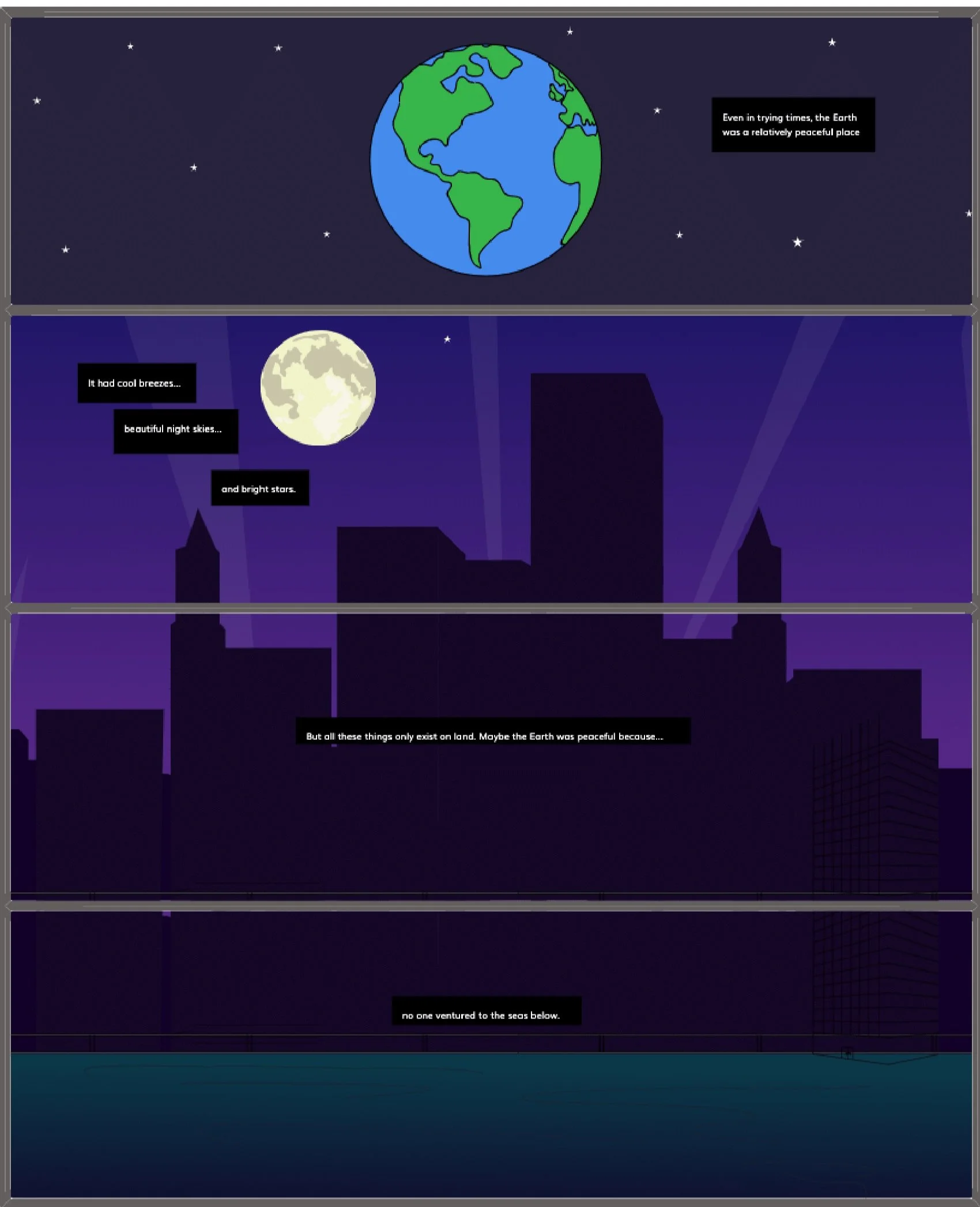How to Write a Series for Comic Books
Comic book series are a great way to tell expansive stories and build deep connections with your readers. Some comic book stories & ideas may be too large for one book, so you decide to use a series to tell your story. However, creating a series requires a different set of skills than a one-off. In this post, we’re going to show you how to write a series for comic books, including some tips on what to consider before you start, how to outline your story and mistakes to avoid keep your readers engaged.
Keep reading to learn how to write a series of comic books that your readers will love!
Which Series Is Right for My Ideas?
When planning a book series, you need to consider what type of series is right for your idea. In general, there are three series to consider for comic books.
Serial
A comic books series that is serial has one overarching narrative that is usually told in several chronological installments.
If your story arc is too big for one comic book, this is a great choice. It allows you to flesh out your idea over a series of books instead of one drawn-out comic book.
Episodic
With an episodic series, you have one consistent protagonist(s). However, the books can get read in any order.
You don't necessarily need to start a couple of books back to understand the storyline. A great example of this is superhero comic books.
While you may better understand parts of the stories if you read earlier issues, the story can also stand alone.
This is a great choice if you want to tell smaller, self-contained stories that still add up to a larger whole. It can also be helpful if you’re not sure how many books you want in your series yet.
Interlinked
An interlinked series features a cast of characters in the same universe. For example, Marvel or DC comics.
This is an excellent choice if you want to create your own universe with your characters.
How to Write a Series
Now that you know what type of series you want to write, it's time to start writing. For many writers, the most challenging part is getting started and then getting through the middle.
To help with that, we have some suggestions that will help. Think of writing a series as guiding the reader to a destination.
To write a series properly, you have to do two key things
Know the destination
Leave hints in each book to guide the reader to the final destination
Every detail doesn't have to be planned, but creating a one-sentence outline will help.
For example:
"The protagonist gives up what she loves most to save her village."
That's it! Not every detail is planned, but you know how everything ends before starting.
🔥HOT TIP🔥
As you begin writing your series, working backward is often helpful. If you know where you want to go, you can begin to plan the steps to get there.
Building Towards a Goal/Planning the End of a Series
Throughout your series, you are building towards a goal. What's that goal? And, how does each book help build towards it?
It's essential to determine that as you begin writing. While you can make adjustments along the way, thinking about the goal you are heading towards will help keep your work cohesive.
For many authors, the "goal" you are writing towards is the end of the series. It could also be to explore the comic's universe or teach a lesson, but focusing on how the story will end and outlining how to get there is one of the simplest ways to plan a series.
So, to successfully build a comprehensive comic book series it is vital to know how the series will end. Arguably, it is more important than the rest of the points, as dictates how your character will change. Without the ending, you won't have a clear direction for your comic books scene which could lead to a confusing book series.
What to do if you don't know the ending of the series?
If you don't know how your comic will end, then you could focus on how your characters will change. Think about who they are at the start, their flaws, and areas of growth. Think of scenarios that will change them, who will change them, and, what settings will add stressors and pressure to the character. From here, you can think about the character's final evolution and conjure up a final event for your comic book series.
How to Write a Series: Key Elements
Theme
Each book in your series needs to have a theme. Otherwise, it just becomes one long book cut into multiple sections.
Make sure to pick themes that connect with your audience. For example, if you're writing a comic book series for children, you could focus your theme on accepting differences.
Characters and Subplots
Your next step is to plan your characters and subplots. For example, do you have a villain? What's their story? The villain's evolution or backstory can be a significant subplot within your book. Why are subplots interesting?
Subplots are an excellent way to keep your reader engaged. They can also introduce new challenges for the characters to overcome.
How to plan and write a subplot:
1) First, decide what the main conflict is going to be.
2) Then, start brainstorming possible subplots.
3) Once you have a few subplots, start thinking about how they can intertwine with the main conflict.
4) Begin writing your subplots into the story.
5) Make sure to resolve the subplots by the end of the book.
Add Easter Eggs
Part of the fun of a comic book is that you can add easter eggs that reference parts of the story that only the biggest fans know. You can do this through the text or with a visual representation.
Remember, easter eggs are supposed to be hidden, so don't make it too obvious.
Rearrange as Needed
You can always go back and rearrange as needed to ensure that your series is cohesive. For example, if you discover that one of the story elements needs to come earlier, so readers get context, you can shift that part.
Mistakes to Avoid When Writing a Comic Series
There are a few mistakes you want to avoid when you're writing. Avoiding these mistakes will help you write a cohesive series that works.
⚡️ACTION STEP ⚡️
One of the biggest mistakes you can make when writing a comic book series is not pacing yourself.
Writing a series is like running a marathon versus a sprint. It requires endurance, and you need to pace yourself to make it to the end.
Having a Weak Middle
It can be difficult to maintain interest in a series when the middle is weak. That's why it's important to make sure that your middle is as strong by:
1) Making sure each scene advances the story in some way.
2) Introducing new subplots or characters that are relevant to the story.
3) Keeping the action and suspense high to prevent your readers from losing interest.
The beginning of your series should grab your reader's attention. It draws them in and spikes their interest. The end of your series offers a satisfying conclusion to your readers. However, the middle of your comic book series is where you need to maintain their attention and add value.
If the middle of your series is weak, it will be difficult to keep your readers engaged. A weak middle feels like filler and lacks the substance and meat needed to keep your reader interested. If your reader gets too bored, you will lose them before they finish the comic book series.
3 tips to avoid a weak middle
1) Make sure each scene advances the story in some way.
2) Don't introduce new subplots or characters unless they are relevant to the story.
3) Keep the action and suspense high to prevent your readers from losing interest.
Not Connecting the Stories
In order to be a successful comic book writer, you need to know how to connect the stories. This means that each individual book in your series needs to connect to the others in some way.
This can be done through characters, plot, or setting. Whatever method you choose, make sure that each book feels like a part of the comic series.
If your readers can't tell that the books are connected, they will be less likely to continue reading. Having a disconnected series confuses the reader as they wonder how the book is even relevant to the overall series. It can also be frustrating to readers as they regret getting so far in a series they cant finish.
Even if you are writing an episodic or interlinked series, certain elements or settings should be used to connect one book to another in the series to reward readers for sticking around and reading the series in order.
For example, say you're writing an episodic series. You should still make sure the reader is able to pick up a book and read it without needing to read the previous ones. However, adding a scene the character runs into a side character from the previous books or receives a response from a letter that will be helpful in the next book will add a useful connection between your series. Great connections in a comic book series will create a community of fans around your story and make encourage your readers to read further.
Plot Holes and Loose Ends
If you don't plan your series or connect it, you could end up with plot holes and loose ends in your comic book series. As you plan your series, create opportunities to answer questions readers might have.
For example, if you introduce a character in the first book and they randomly disappear in the second, that's a loose end. You need to explain what happened to that character or why they're no longer important to the story.
Leaving plot holes creates frustration in readers as they feel like they're not getting the full story. It's important to make sure that everything is tied up by the end so your readers feel satisfied.
However, not everything needs a paragraph of explanation dedicated to it. The level of detailed explanation also deepens the importance of the topic or character. Keep this in mind as you fix the plot holes and loose ends in your comic book series.
Start Writing Your Comic Book Series
Knowing how to write a series is the first step in beginning your great comic book saga. Make sure you take the time to plan and develop your characters and then start writing.
Are your art skills stopping you from writing the comic book series of your dreams? You don't have to be an aspiring artist to dive into the comic book industry.
Sign up for our online comic maker today, and let us provide the art. All you need is a great story
Now that you know how to write a comic book series, it's time to start writing your own. Use these tips to ensure that your series is engaging and cohesive. And don't forget to have fun!
Happy writing!
Hi, Welcome to Storyspread.com!
Comic creation made simple. Create graphic novels with a single click. Add character, backgrounds, and more.
Easy to use. Say goodbye to searching far & wide for an expensive illustrator.
Tell your story. Join other creatives, readers, and hobbyist in producing high quality & beautiful comics
Read. Read other’s comics for FREE and share with others
Grow. Grow an audience you love with the stories YOU imagined
Were you can create a comic and graphic novel WITHOUT drawing. Simple and easy! Made for all skill levels. Click-n-drag comic book characters, scences into panels.
Create a comic just like this! Here.





